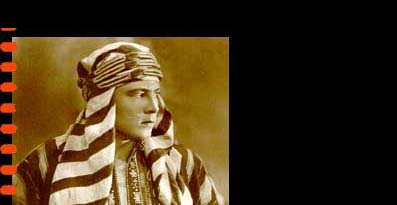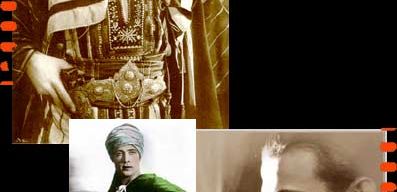





The title of this essay is inspired by a remark attributed to Porfirio Díaz, dictatorial president of Mexico from 1876 to 1910. The actual quote is ""Poor Mexico, so far from God and so close to the United States"-a reflection on the always problematic relationship between the two neighboring countries. Of course, I am not implying that Cahiers du Cinéma enjoys any kind of divine status. I simply use it as a symbol of serious international cinema, where films are appreciated for their individuality and artistry. The title should also broadcast that this is an opinion piece (well, an unabashed rant, really-especially in the reference notes) against certain broad-based cultural perceptions in the United States and how they may affect the distribution of foreign and domestic movies.
For generations the United States has been attracting millions of immigrants and Latin Americans continue to be an important component of these demographic movements. In the 1930s, the immigrants were mostly from Mexico and they were largely concentrated in the Southwestern states. There were some Cubans in Florida, especially in the neighborhood of Ybor City in Tampa. New York had a small multinational, generally middle-class, Latin American population that supported a staid newspaper, La Prensa, and one or two movie theaters that screened Mexican movies. The 1940s saw the beginning of a massive Puerto Rican migration to New York. These disparate communities had little awareness of each other.
In the 1940s, the U.S. became an important foreign market for Mexican movies in addition to Latin America and Europe. Unsubtitled Mexican films were distributed to Mexican-Americans in California, Texas, and rest of the Southwest; and to the mainly Puerto Rican population in New York. The distributor was Azteca Films, a Mexican government agency set up for the specific purpose of supplying Mexican films to the more than 400 locally owned theaters in the United States that screened these films exclusively. Between 1931 and 1938, Hollywood made Spanish-language films, but these were principally for the Latin American markets, and not directed to Spanish-speaking groups in the United States.1
By the 1960s, there were fast-moving social, demographic, cultural, and political changes in American society. The black civil rights movement led to the Civil Rights Act of 1964 that eventually resulted in a bureaucratic categorization of "protected" minorities that would be included under affirmative action policies. This would further crystallize traditional American social and racial attitudes which among other oddities established "Hispanics" or "Spanish-origin" as a "race." The United States is the only country in the world where such a category exists. Mainstream American perceptions, reinforced by official policies and disseminated by the mass media, locked in on this concept, making it difficult to alter.
By the early late 1980s and early 1990s, the older label of "Hispanic" was being displaced by a new, presumably trendier usage: "Latino"-a hispanicized abbreviation of Latin American.2 The term "Latin" has long been used in the United States-from "Latin lover" for the Italian Rudolph Valentino to the 1940s song, "Latin from Manhattan." Besides, it had occasionally been used as an abbreviation for Latin American in the print media. The first usage of "Latino" is unclear, but it was probably concocted in the early 1980s by some Hispanic political and media activists who apparently wanted to emphasize the hemispheric origin of the great majority of Hispanics in the United States. The mainstream media quickly picked up on "Latino" which appealed to its tendency of gathering up complex issues under one simple label.
The term "Chicano" means Mexican-American and was adopted in the 1960s by militant, university-based Mexican-Americans because they apparently considered "Mexican-American" too stodgy and "middle-class."3 And they wanted to emphasize that the Mexican-derived culture of the U.S. Southwest was something entirely new, evolved from but now independent of its Mexican origins. These activists also wanted to emphasize that "Chicano culture" is rooted in the Mexican communities of the areas taken over by the United States in the war of 1846-48-California, Arizona, New Mexico and Texas.4 And finally, they identify with the Indian/mestizo basis of Mexicans and Mexican-Americans.
The origin of the term "Chicano" is mired in myth. Most Chicano writers, activists, and academics claim it is the way Mexican Indians pronounced mexicano (they never specify which Mexican Indians, of which there are many groups, speaking different languages and thus having different pronunciations). This is a romantic nationalistic-cultural definition without any basis in fact. The more probable definition is less glamorous.



The original cultural activists seem to have deliberately selected "Chicano" because it described socially marginalized people. It was long used in the criminal argot of the border, and specifically the El Paso-Ciudad Juárez area. And it apparently derived from an old Mexican colloquialism, chicanear, which was a corruption of the French chicane, or chicanery. It had long usage in the Mexican underworld to describe dishonest lawyers who used all kinds of tricks to try to free criminals. An elderly informant in northern New Mexico said he remembered as a child in the 1940s that the term was applied to someone who had pulled off a successful heist, as in es muy chicano.5 Now that I have advanced this definition of Chicano, which will no doubt be upsetting to those persons who identify themselves as such, I proceed to discuss what relevancy these issues of ethnic identification and labeling can have to the distribution of Latin American, and more specifically Mexican, films.
The Chicano "movement," as its participants describe it, is based on the notion that the Southwest United States is "stolen" territory and as the aggrieved inheritors of this "Aztlan," as they call it,6 Chicanos have a special claim on the land. Since a good part of the concept of being a Chicano is based on historical resentment against the American "land grab" of Mexican territory in 1848, its adherents are motivated in no small measure by resentment against mainstream America. And these feelings, unfortunately, carry over into a good many of the "Chicano" films, which are now generally referred to as "Latino."7
